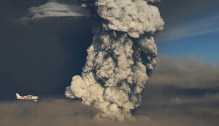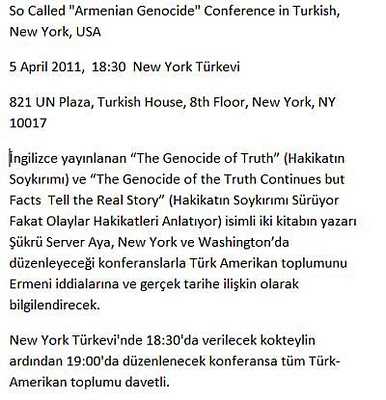
Dan Milmo, Amelia Hill and Alok Jha
Transport secretary Philip Hammond says that, as the plume of ash is decreasing, there will be delays but not cancellations
The volcanic ash plume causing havoc in airspace over western Europe is unlikely to disturb the plans of holidaymakers hoping to fly away for the bank holiday, according to the transport secretary, Philip Hammond.
He said that no airports will be closed and no planes grounded as the plume steadily decreases in height and intensity. Any disturbance due to the eruption will be limited to mild delays.
Hammond rejected claims by Ryanair boss Michael O’Leary that the weather charts showing ash over Scotland were “mythical”.
Speaking to the press after chairing the government’s Cobra crisis response committee, Hammond said O’Leary had been wrong to claim he had flown safely through airspace condemned as dangerous by the Civil Aviation Authority (CAA).
“O’Leary’s claims that the charts are wrong and that it is safe to fly are confusing and irresponsible,” said Hammond. “Despite his assertions that he had flown through a red zone … it appears from flight logs that he was travelling at a height and time that the CAA had already redesignated as being safe.”
Hammond admitted the weather charts were not as precise as he would like. But, he said: “The charts are much more refined than they were last year. Could they be more refined? Of course, but we are in a continuously learning process. Our primary responsibility must always be the safety of passengers.
Hammond said he was “cautiously optimistic” that south-west winds will clear the remaining ash from British air space over the next couple of days. “In the short term, it is reasonably positive news,” he said.
The blanket bans imposed by the government last time there was a volcanic eruption were, added Hammond, a thing of the past.
The new system, requested by the airlines after the chaos of last year, allows individual carriers to apply for permission to fly in different environments depending on their specific capabilities.
Hammond said this meant proportionally fewer flights had been cancelled and airports closed this time around. “We’re red-lining a much smaller proportion of total ash cloud this year compared to last,” he said.
British Airways, easyJet and BMI cancelled substantial numbers of Scotland services, and transatlantic flights also suffered delays of up to an hour on Tuesday morning. Airports in Newcastle and Durham Tees suffered cancellations as the ash cloud drifted southwards.
A Met Office spokesman said the thickest concentrations of ash, which airlines still cannot fly through, will have moved across the north sea by 6am on Wednesday, allowing airlines to resume normal services. “High concentrations of ash will be moving towards Germany, Holland and Denmark.” Eurocontrol warned of “some impact” on flights in Scandinavia, but said new safety procedures for flying through ash would limit cancellations. According to more distant forecasts, if the Grímsvötn eruption continues there is a risk of further disruption across much of the UK on Friday.
The spokesman said windy and wet weather was helping to disperse the particles, unlike last April when the UK was caught in a dead calm of high pressure that prevented dispersal of a cloud from Iceland‘s Eyjafjallajökull volcano.
Ultimately, airlines were only able to fly again following a radical redrafting of safety guidelines for flying through ash.
“The weather is much more dynamic,” said the Met Office spokesman. “There is a succession of high and low pressure areas [creating wind] coming across the Atlantic and there is a lot of rain that tends to wash out the pollutants.”
The intensity of the eruption is also diminishing. The height of the column of ash coming out of the volcano, which is sensitive to the rate of material coming out, had reduced from 20km on Sunday to around 5km on Tuesday.
In addition, the land around the volcano no longer seems to be inflated with magma from the Earth’s interior and seismometers have detected a decline in the tremors that are normally associated with an eruption.
Colin Brown, director of engineering at the Institution of Mechanical Engineers, who has previously worked on aircraft engines at Rolls Royce, said the Grímsvötn eruption would “absolutely not” be as impactful on the UK as last year’s volcanic disruption. “The two fundamental differences are that it’s a different volcano and, thankfully, the weather is completely different,” he said.
The Barcelona football team said it would travel to London on Wednesday night for Saturday’s Champions League final against Manchester United, in case the ash cloud left the team contemplating an epic rail journey.
The Met Office rejected claims from Ryanair that it had put out “mythical” weather charts that erroneously placed dense ash clouds over Scotland throughout much of Tuesday, citing evidence of ash falls in Glasgow, Kirkwall Airport and citings by airplanes and a research ship travelling between Iceland and Scotland.
“We have seen lots of evidence from various sources that the ash is present across Scotland and fits in with the computer models that we are running continually. It all points to a presence where we expect to see it.”
Ryanair claimed that dense ash clouds were non-existent after running a test flight yesterday morning between Glasgow, Inverness and Edinburgh which it said produced no evidence of ash in the Boeing airplane’s engines or on its fuselage.
However, Europe’s largest short-haul airline has effectively been barred from Scottish airspace after failing to get safety clearance from the Irish Aviation Authority.
Under the new safety regime on ash, airlines must prove that they can fly through three types of volcanic pollution: low; medium; and high. Major UK airlines have been cleared by the Civil Aviation Authority to fly in medium or low densities, which have also hit the UK .
Ryanair, which is registered in Dublin, saw its initial submission to the IAA rejected on Monday evening for unspecified reasons. The IAA has said that it is still considering Ryanair’s new submission, forcing the airline to avoid airspace with even medium densities of ash, defined as 4000 microgrammes per cubic metre of air.
The IAA said it was “currently working with Ryanair on its safety case submission and it is inappropriate to make any comment on this case.”
Ryanair said: “Following a direction from the Irish Aviation Authority Ryanair regrets that we have been forced to cancel all flights to/from Scottish Airports for the remainder of the day.”
Aviation sources also pointed to the test flight’s operational height of 41,000 feet, which was higher than the densest ash concentrations over Scotland.
The International Air Transport Association (IATA), whose members include BA and bmi, accused UK authorities of a slow response and accused the CAA of failing to procure a back-up atmospheric monitoring plane, a claim which the CAA rejected.
Giovanni Bisignani, IATA’s chief executive, added that non-European airlines could be confused by the ash cloud because their regulators will not be fully aware of the latest EU guidelines on flying through volcanic plumes.
“We need a clear, consistent and appropriate response, which is workable for all airlines globally, not a repeat of the fragmented mess that happened last year.”
www.guardian.co.uk, 24 May 2011
 Calling the Israeli regime as one of apartheid is not rhetoric, nor is it an exaggeration or a propaganda tool. This is the reality in modern day Palestine, where the Israeli regime is based on discrimination, through laws, practices, education and most aspects of life. This apartheid regime is not only imposed on the people in Palestine, but also on millions of Palestinian refugees denied their right to return home because they are of the wrong religion.
Calling the Israeli regime as one of apartheid is not rhetoric, nor is it an exaggeration or a propaganda tool. This is the reality in modern day Palestine, where the Israeli regime is based on discrimination, through laws, practices, education and most aspects of life. This apartheid regime is not only imposed on the people in Palestine, but also on millions of Palestinian refugees denied their right to return home because they are of the wrong religion.






